Transcend SSD340 (256GB) Review
by Kristian Vättö on August 4, 2014 5:00 AM ESTRandom Read/Write Speed
The four corners of SSD performance are as follows: random read, random write, sequential read and sequential write speed. Random accesses are generally small in size, while sequential accesses tend to be larger and thus we have the four Iometer tests we use in all of our reviews.
Our first test writes 4KB in a completely random pattern over an 8GB space of the drive to simulate the sort of random access that you'd see on an OS drive (even this is more stressful than a normal desktop user would see). We perform three concurrent IOs and run the test for 3 minutes. The results reported are in average MB/s over the entire time.
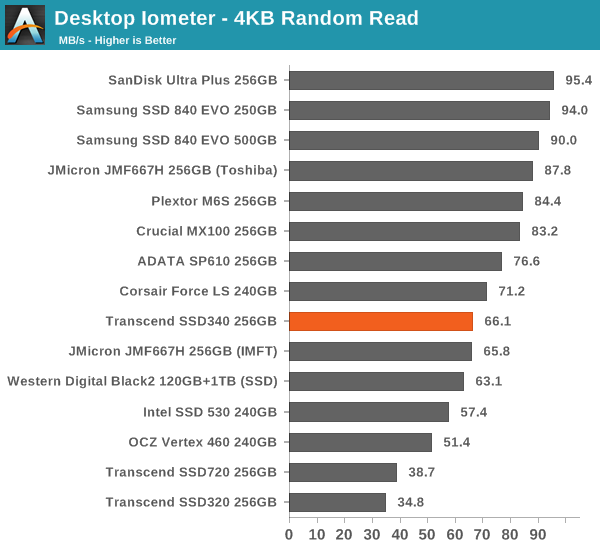


Random performance is okay and similar to the other JMF667H SSDs. Queue depth scaling has never been JMicron's strength but then again typical client workloads do not usually go above queue depth of 5 anyway.
Sequential Read/Write Speed
To measure sequential performance we run a 1 minute long 128KB sequential test over the entire span of the drive at a queue depth of 1. The results reported are in average MB/s over the entire test length.
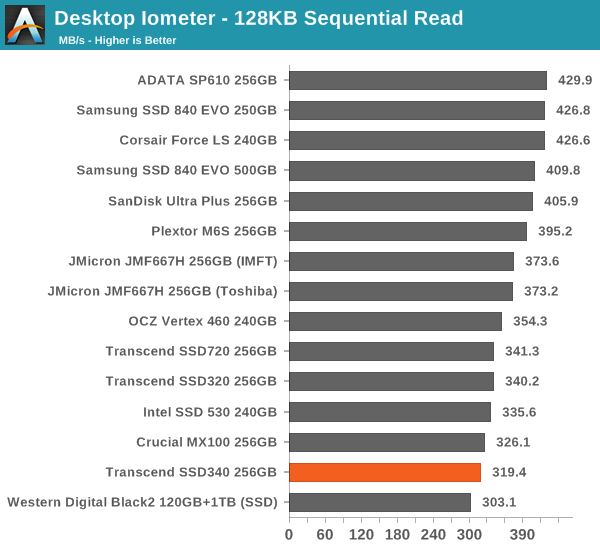
Sequential performance leaves a lot to be desired. Especially write performance is poor for a 256GB drive.
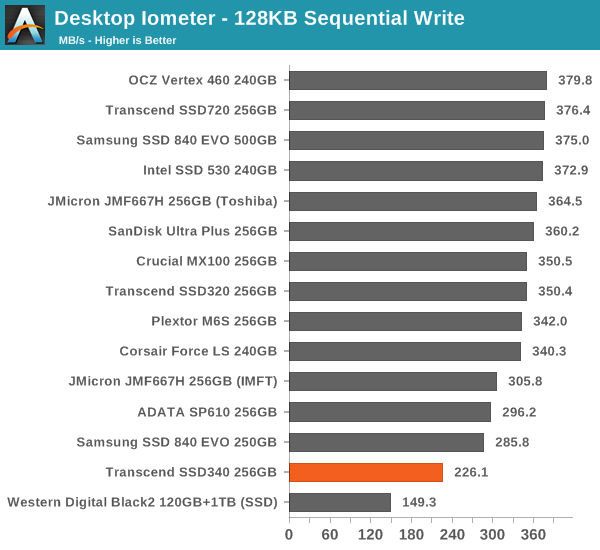
AS-SSD Incompressible Sequential Read/Write Performance
The AS-SSD sequential benchmark uses incompressible data for all of its transfers. The result is a pretty big reduction in sequential write speed on SandForce based controllers.
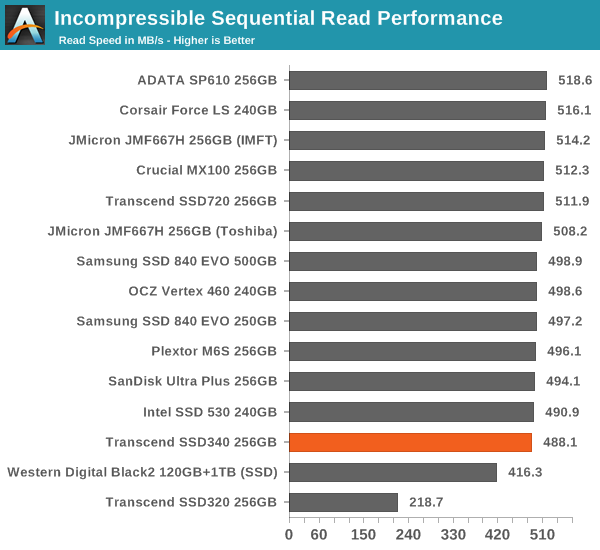
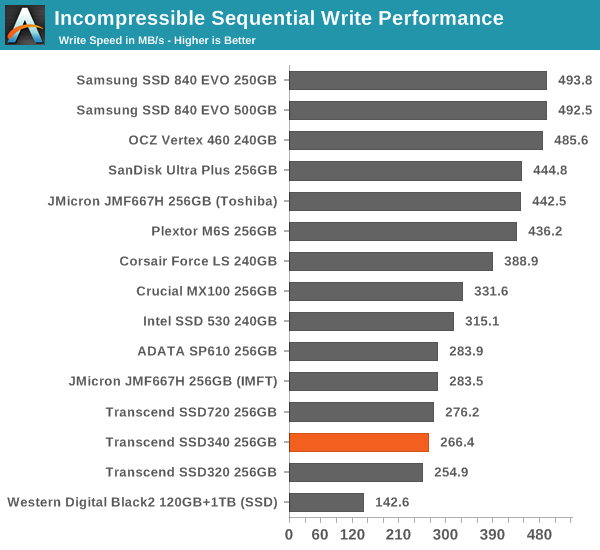










57 Comments
View All Comments
TonyCL6 - Wednesday, August 6, 2014 - link
SSD370 should be pretty much the same as AData SP610 because of the controller and NAND configuration.Per Hansson - Monday, August 4, 2014 - link
The more things change the more they stay the same seems a fitting quote for this Transcend's SSD endeavors!homerdog - Monday, August 4, 2014 - link
Unless these drives fall way down the price ladder, there simply no reason for them to exist.MadMan007 - Monday, August 4, 2014 - link
Is there any budget SSD that makes sense in a world where the MX100 exists?Samus - Monday, August 4, 2014 - link
This drive (and this company) is completely irrelevant. I don't get why anybody would buy a drive outside of the Crucial/Micron/Intel/Samsung/Toshiba/Sandisk circle.Kingston, ADATA, Transcend, OWC, Mushkin, Corsair, and so on, make no compelling products and can't compete with Sandisk/Crucial on price because they don't make their own memory, controllers, or both.
hojnikb - Tuesday, August 5, 2014 - link
Pretty much. Unless you're owning a fab it's pretty hard to compete price wise.TonyCL6 - Wednesday, August 6, 2014 - link
Frankly for consumer market, only Samsung and maybe Toshiba has its own SSD controllers. The rest are now mainly using Marvell solutions. Kingston, ADATA, Transcend, OWC, Mushkin, Corsair and so on help Micron(Intel) and Toshiba(Sandisk) a lot to support/ consume their NAND Flash capacity. If they all gone, I personally don't think that would do any good to end-users. You can easily tell from how Samsung sells TLC and VNAND products. The cost of NAND is way much cheaper but that never reflects on the selling price.l_d_allan - Tuesday, August 5, 2014 - link
As Butch Cassidy said, "Don't sugar-coat it" :-)StrangerGuy - Tuesday, August 5, 2014 - link
Anandtech should just probably come blunt and say "If you can't beat the MX100 in price/performance/reliability don't even THINK about selling consumer SSDs thank you very much"Readers that visit this site ain't fooled no matter how much ads or exposure that comes down our throats.
hojnikb - Tuesday, August 5, 2014 - link
But its true. Why buy a turd, if you can speds a few extra bucks and get a proper drive.